OpenMusic Tutorials
Prev| Chapter 9. Playing MIDI II| Next
Tutorial 29: Working with MIDI files II
Channel parsing
Topics
Converting a standard Midifile into a Chord-seq with correct microintervals.
Key Modules Used
Midifile , omloop, omif,
repeat-n
The Concept:
Most commercial MIDI sequencers don’t support microintervals. When working
with these environnments, one must use a multichannel setup in order to
simulate microintervals, by “pitchbending” certain channels as is done
automatically in Openmusic. In this tutorial we will show how to convert one
of these MIDI files into a Chord-seq which will play
correct microintervals.
The Patch:
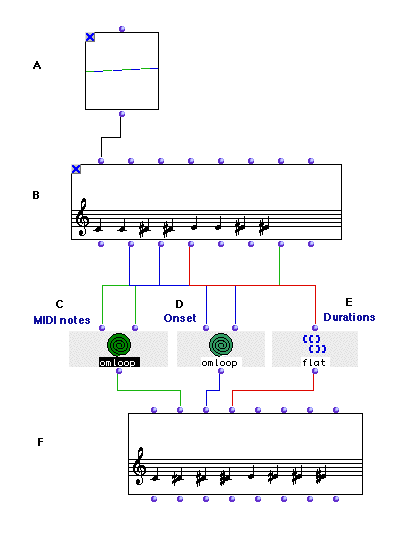
In our example we have created a simple multitrack MIDIfile. It represents a chromatical segment of a quarter-tone scale starting from C3. The first MIDI track is on channel 1 which is the normally tuned track; The second is on the channel 2, which shouold be tuned 1 quartertone higher. We need to get these notes back onto a single channel and adjust their midics to reflect the detuning of the other channels in the MIDI file.
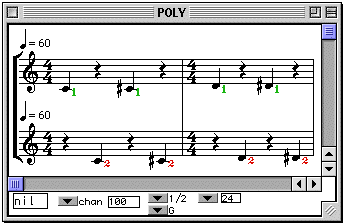
At (A) the MIDIfile is opened (or dragged into an OpenMusic patch).
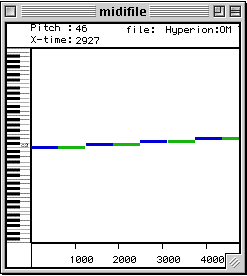
Each color represents a different MIDI channel. (Here blue is channel 1 and green is channel 2)
Now if we open the Chord-seq (B) editor and check the chan popup menu, we can see each note’s channel.
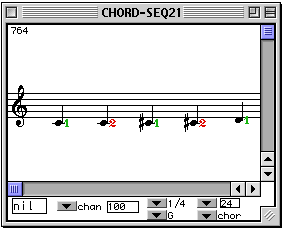
In the first omloop (C) we will use omif to
‘correct’ each note, and turn it into the right pitch, by checking to see
whether the channel equals 2. Note that we use two listloop
boxes to enumerate the MIDI notes and the channel assignments simultaneously.
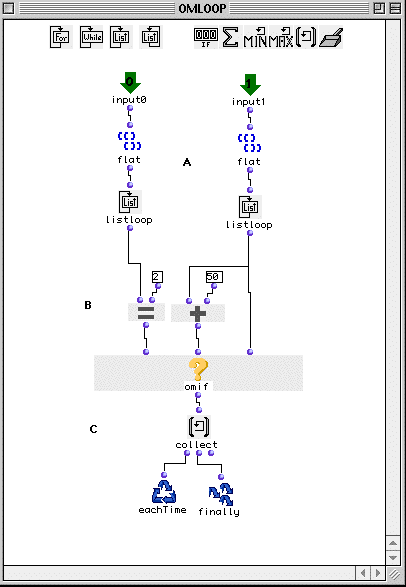
In this case our line is of single notes. If there had been chords we would
have needed to process the onset times and assign the same onset time to every
note of the chord. This is done with the omloop below:
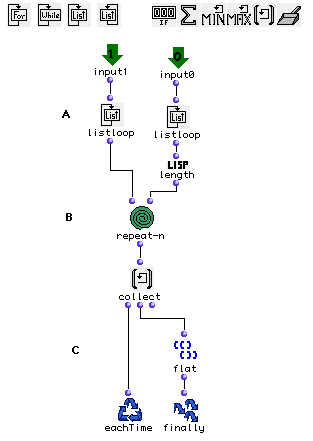
The _ldur_ output is a list of lists. Each integer is a duration of a single
note, so all we have to do is flatten the list using flat.
All this results in the following:
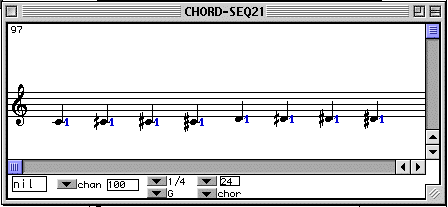
Each note is correctly parsed to the right channel according to its tuning.
Prev| Home| Next
—|—|—
Tutorial 28: Working with MIDI files I| Up| Using
Musical Objects I